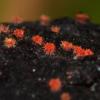
24-09-2014 21:33
Could you tell me which way to look ?Diam. 1 mm.

26-09-2014 15:15
 Alessio Pierotti
Alessio Pierotti
can someone help me with this work ?Booth, C.; O'R

26-09-2014 13:48
 Rubén Martínez-Gil
Rubén Martínez-Gil
Hola a todos. Subo unas fotos de una Pulvinula qu

26-09-2014 15:13
 Alessio Pierotti
Alessio Pierotti
can someone help me with this work ?Booth, C.; O'R

25-09-2014 08:22
 Blasco Rafael
Blasco Rafael
Hola, Tengo ESTAS Muestras Recogidas en Hayedo - a

24-09-2014 20:25
Bonsoir les amis Peut etre j'avais recolté le me

24-09-2014 19:43
 Bernard Declercq
Bernard Declercq
Good evening,does anyone have following paper for

22-09-2014 22:08
 Rubén Martínez-Gil
Rubén Martínez-Gil
Hola a todos. Subo fotos de una Peziza que he enc

22-09-2014 08:03
 Beñat Jeannerot
Beñat Jeannerot
Adio à tous, Cette Helvella, récoltée aux Oule
Unknown ascomycetes 24-09-14
Vasileios Kaounas,
24-09-2014 21:33
Diam. 1 mm.
Vasileios Kaounas,
24-09-2014 21:37
Re : Unknown ascomycetes 24-09-14
spores (20)-26-30 ? 7-10
Christian Lechat,
25-09-2014 05:54

Re : Unknown ascomycetes 24-09-14
Hi,
does the ascomatal wall change color in KOH?
it would be necessary to see the ascomatal wall, in vertical section
What is the host?
Christian
does the ascomatal wall change color in KOH?
it would be necessary to see the ascomatal wall, in vertical section
What is the host?
Christian
Vasileios Kaounas,
28-09-2014 14:01
Re : Unknown ascomycetes 24-09-14
you're right Cristian, but the sample is not mine, I try to convey the data one my friend...
Vasileios Kaounas,
28-09-2014 14:01
Re : Unknown ascomycetes 24-09-14
asci 60-70-105 x 17-22 ascospore 27-35 X 7-11

 -Nu-omicron-gamma-gamma-rho-alpha-phi-omicron-tau-omicron-upsilon-Microsoft-Word-3--0001.pdf
-Nu-omicron-gamma-gamma-rho-alpha-phi-omicron-tau-omicron-upsilon-Microsoft-Word-3--0001.pdf